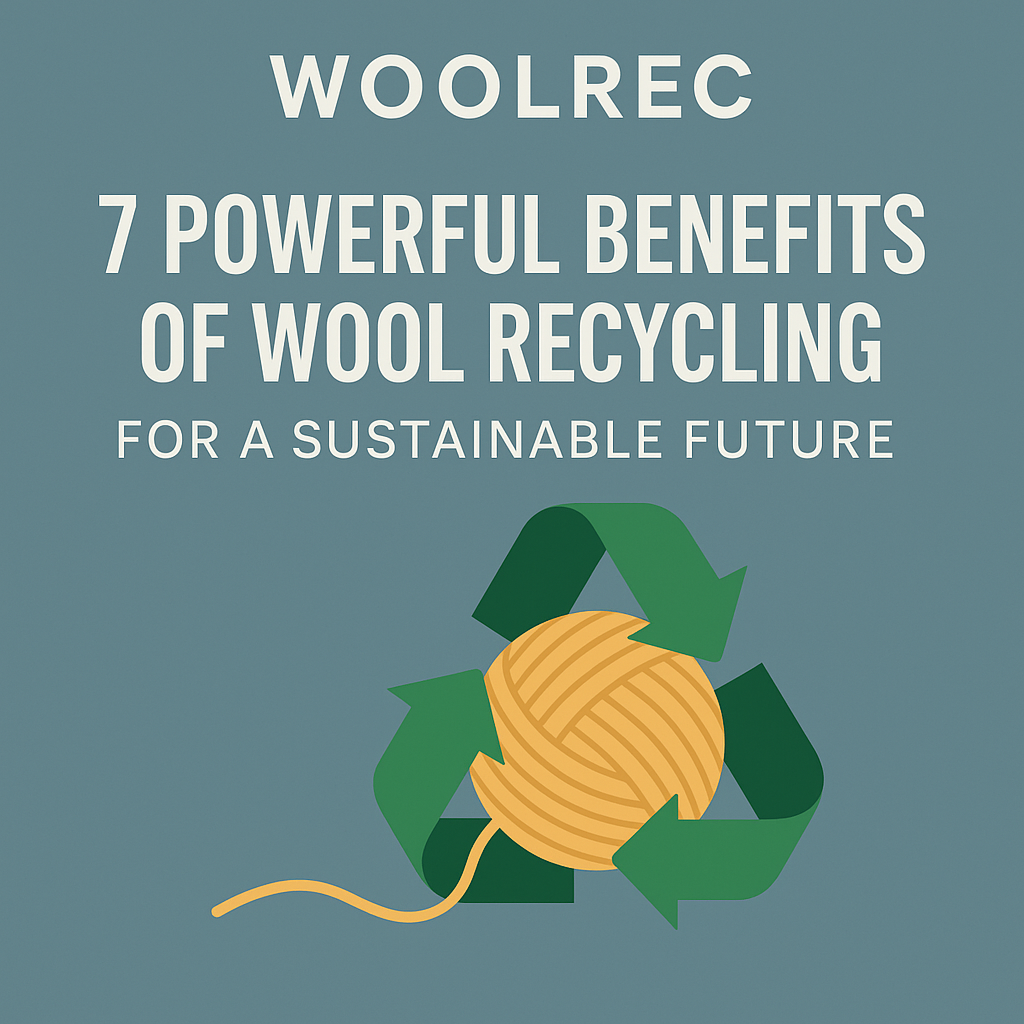Woolrec has been used for thousands of years. It is natural strong and warm. Today the fashion industry produces huge amounts of waste. Many wool clothes end up in landfills. Quartist
Woolrec means recycling wool. It collects old wool products and turns them into new fabrics. This process saves resources and reduces waste.
A German company once used the name Woolrec GmbH. It was part of an environmental scandal. That story is different. In this guide Woolrec means safe and honest wool recycling.
What is Woolrec
Woolrec is more than one idea.
-
It is a process for recycling wool into new textiles.
-
It is a technology that uses machines and methods.
-
It is a movement for a circular economy.
Main goals of Woolrec
-
Reduce textile waste
-
Save land water and energy
-
Give wool a longer life
The Woolrec Process
Recycling wool follows clear steps. Each step adds value.
Steps
Step 1. Collection
Factories gather wool off cuts. Brands and charities collect old clothes and blankets.
Step 2. Sorting
Workers sort items by quality and fiber. They remove buttons and zippers. They also group wool by color.
Step 3. Cleaning
The fabrics go through washing and scouring. This removes oils and dirt.
Step 4. Reprocessing
Machines shred the fabrics. Garnetters open yarns back into fibers. Carding aligns the fibers.
Step 5. Spinning and Blending
Fibers become yarn. To improve strength they often mix with virgin wool or cotton.
Step 6. Finishing
Yarns may be dyed. Treatments improve softness and durability.
Process Table
| Step | Purpose | Action |
|---|---|---|
| Collection | Gather wool waste | Collect scraps and old clothes |
| Sorting | Improve quality | Remove trims and separate fibers |
| Cleaning | Prepare fibers | Wash and scour |
| Reprocessing | Break down fabrics | Shred and card |
| Spinning | Create new yarn | Blend with virgin fibers |
| Finishing | Add value | Dye and treat fabrics |
Applications of Woolrec
Recycled wool has many uses.
-
Fashion: Sweaters coats scarves suits
-
Home: Upholstery rugs blankets carpets
-
Industry: Insulation felts sound panels padding
Applications Table
| Area | Use |
|---|---|
| Fashion | Knitwear outerwear suits accessories |
| Home | Upholstery rugs throws |
| Industry | Soundproofing insulation felt |
Benefits of Woolrec
Environmental Benefits
-
Diverts wool from landfills
-
Saves land water and energy
-
Cuts down dye use by sorting colors
Economic Benefits
-
Lowers production costs
-
Balances supply when wool prices rise
-
Creates new recycling jobs
Consumer and Brand Benefits
-
Builds trust in sustainable products
-
Meets demand for eco fashion
-
Encourages reuse repair and donation
Challenges of Woolrec
Woolrec also faces challenges.
-
Fibers become shorter and weaker after recycling
-
Dark fibers limit color choices
-
Contamination reduces quality
-
Lack of traceability risks greenwashing
Challenges Table
| Problem | Effect | Solution |
|---|---|---|
| Short fibers | Weak fabrics | Blend with virgin wool |
| Dark fibers | Few light colors | Better color sorting |
| Contamination | Poor quality | Manual and machine sorting |
| Traceability | False claims | Certifications and audits |
Standards
To protect trust Woolrec follows strict standards.
-
GRS Global Recycled Standard checks social and environmental rules.
-
RCS Recycled Claim Standard confirms recycled content.
-
Chain of custody audits track fibers from source to product.
Woolrec and Circular Economy
Woolrec fits into the circular economy. Products last longer and return into use.
-
Brands create take back schemes.
-
Consumers return old items.
-
Mills recycle them into new fabrics.
This loop reduces waste and creates new value.
Case Studies
-
In Prato Italy mills recycle wool on a large scale. They blend recycled fibers with virgin wool for strong fabrics.
-
Many fashion brands now release collections that include recycled wool.
-
The construction industry uses recycled wool for insulation and acoustic panels.
Consumer Role
Consumers play a big role in Woolrec.
-
Buy products made with recycled wool
-
Care for clothes to extend life
-
Repair garments instead of throwing them away
-
Donate or return old wool to collection points
-
Choose brands that use GRS or RCS standards
Historical Note
Woolrec GmbH once sold a product called Woolit. It caused environmental problems and legal issues. That case shows why honest recycling and certification matter today.
FAQs
Is recycled wool strong?
Yes but it is usually blended with virgin wool for durability.
Can wool be recycled many times?
Yes but fibers get shorter each cycle.
Does recycling wool save energy?
Yes because it reduces the need for new wool and dyeing.
What standards apply?
GRS and RCS are the main ones.
How can people recycle wool?
They can donate return or give items to collection programs.
Conclusion
Woolrec is a practical way to recycle wool. It reduces waste and saves resources. It creates new fabrics for fashion home and industry.There are challenges with fiber quality and traceability. But with standards and better systems Woolrec becomes more reliable.
The future of textiles depends on solutions like Woolrec where tradition meets innovation.
